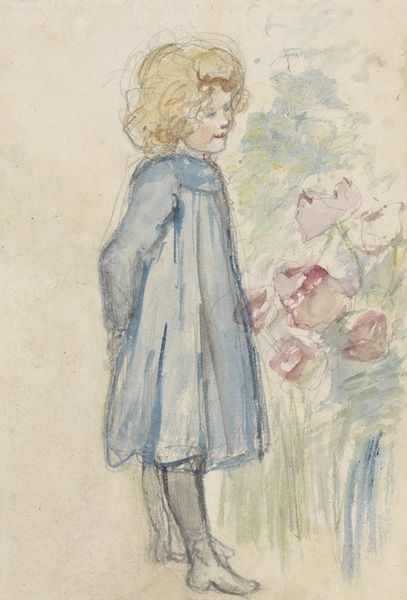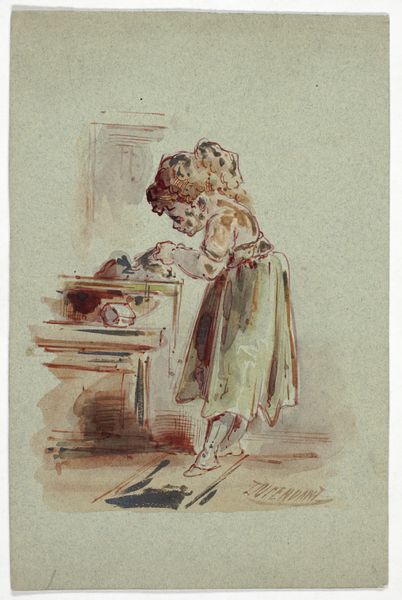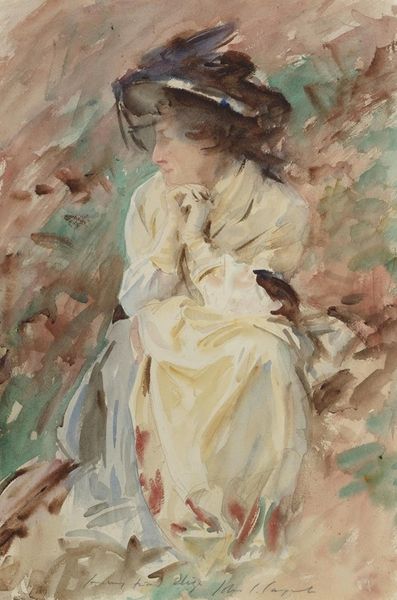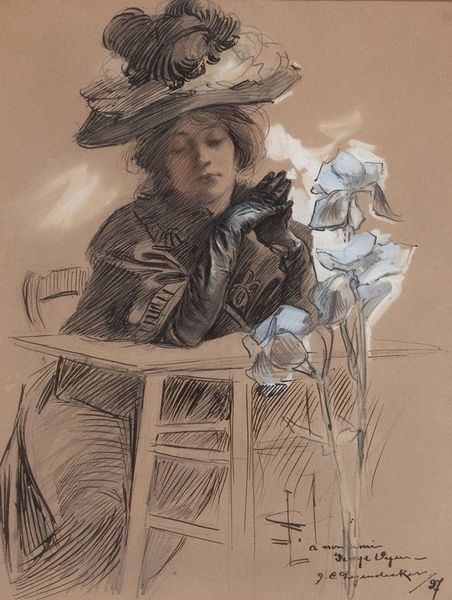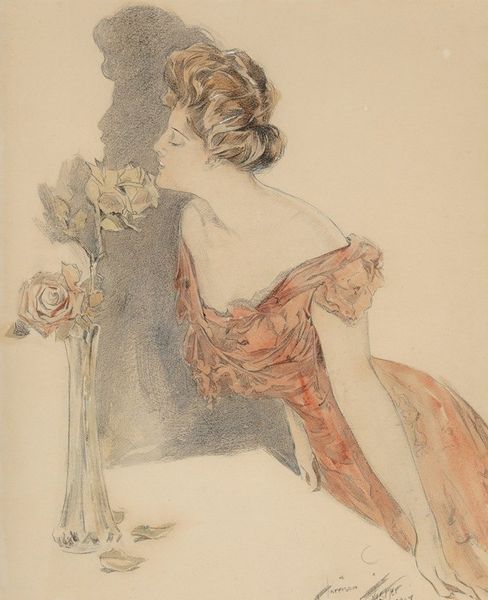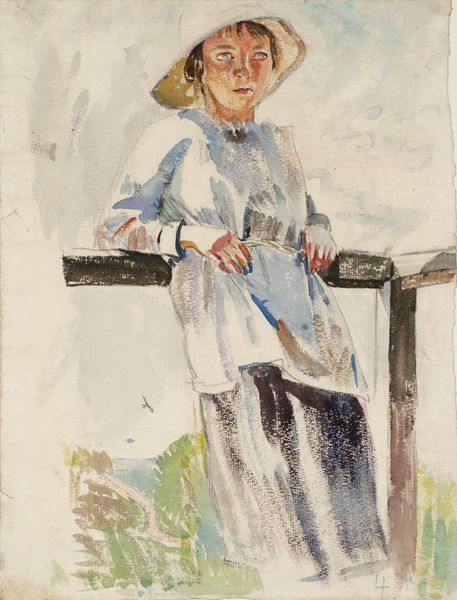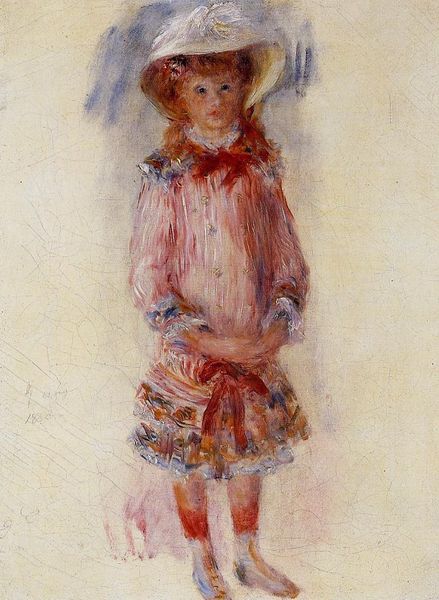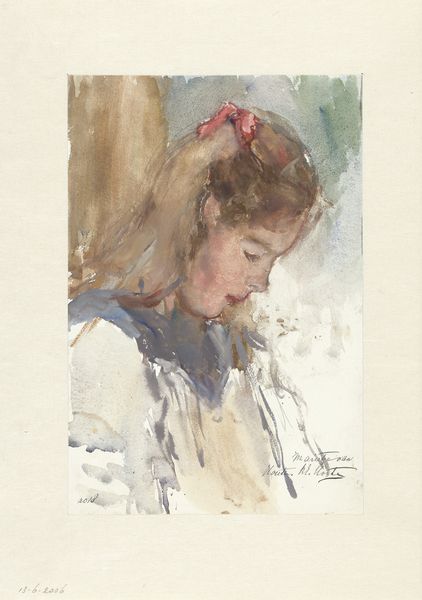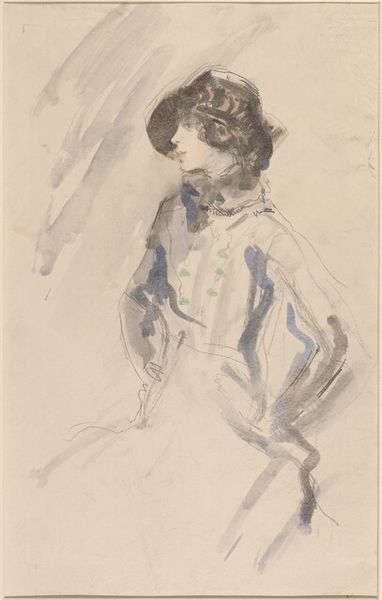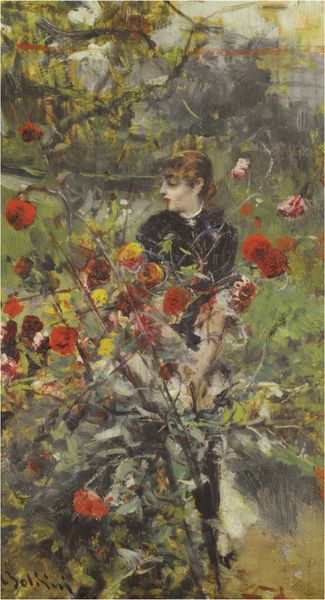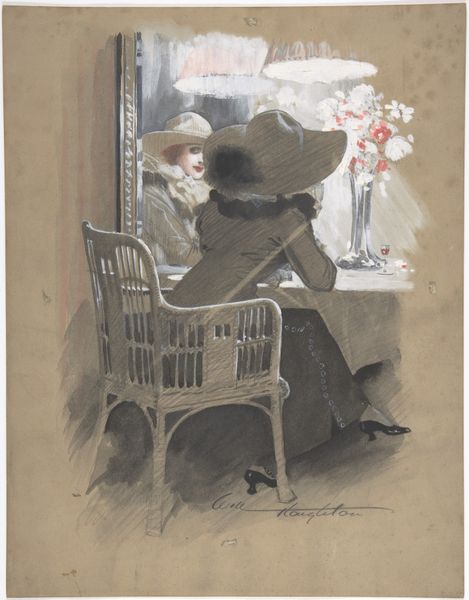
drawing, plein-air, watercolor
#
portrait
#
drawing
#
impressionism
#
plein-air
#
landscape
#
figuration
#
watercolor
#
intimism
#
genre-painting
#
watercolor
Copyright: Public Domain: Artvee
Curator: Looking at this intimate scene, what strikes you first? Editor: There's a gentle melancholy to it. The colors are muted, and the little girl seems almost lost in contemplation, surrounded by the slightly faded grandeur of the flowers. Curator: This is Jozef Israëls' "Standing Girl in Flower Garden," likely created somewhere between 1834 and 1911. We see Israëls employing a watercolor technique to capture a very private, domestic moment. It is particularly interesting when we analyze it in parallel to other popular imagery from this time. Editor: Right, because at the surface this watercolor drawing gives the impression of this private, perhaps privileged moment, but when one considers its original audience, the scene reflects more broadly upon the role of girls and women at that time in relation to the bourgeois domestic interior and exterior of the home, even in the garden setting. Curator: I completely agree. Also, Israëls’ artistic output can be seen to underscore how national identity played a key role in shaping the visual rhetoric around childhood. Israëls' use of watercolor aligns with the artistic trend of Impressionism, where the quick strokes and fluidity emphasize fleeting moments and changing light. He produced this artwork while partaking in the nineteenth-century plein-air practice. How do you see his choice of technique impacting the artwork? Editor: It certainly lends itself to a feeling of immediacy, doesn't it? You get the sense that Israëls wanted to preserve the raw, untamed essence of childhood curiosity and this connection with nature as he captured it on that very day. However, the sketch-like style may downplay that girls’ coming-of-age was fraught with various anxieties related to access, safety, social expectations, class, and other factors. Curator: I suppose in this reading, the work functions on several layers, a record of daily life imbued with the symbolic, though possibly inadvertent, baggage that shadows many artworks of its time. This is also a painting after all! The visual pleasure and emotion, are still what captures the viewer, even the contemporary one. Editor: A testament to the power of art history to illuminate not just what was, but also what could have been, through interrogating those shadows you’ve highlighted. Curator: Precisely. I find myself reflecting on its initial context, and wondering about the ripple effects it might generate among audiences now. Editor: I feel inspired to examine the garden motif throughout visual culture! Thank you!
Comments
No comments
Be the first to comment and join the conversation on the ultimate creative platform.
